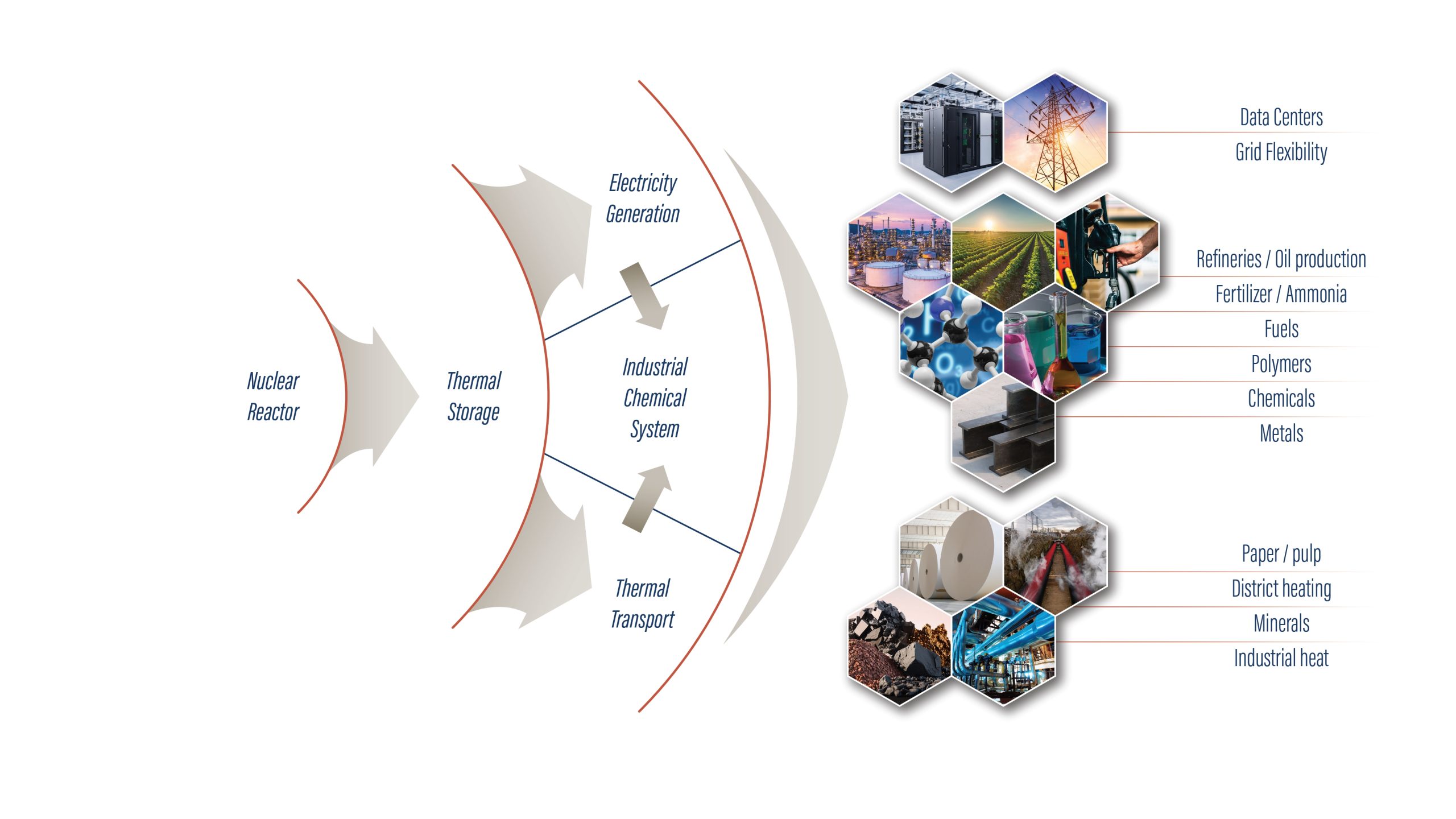What are Integrated Energy Systems?
They are the physical and digital integration of energy sources and energy currencies to increase the thermodynamic efficiency and use of the system. The goal of integrated energy systems (IES) is to create efficient, affordable, reliable energy generation and delivery technologies for the United States.
Development of IES may include multiple raw energy inputs (e.g., nuclear, fossil, wind, solar, hydropower and geothermal-based), multiple energy users (e.g., grid consumers, industrial heat or electricity users, transportation fuel users), and multiple energy storage options (e.g., thermal, electrical and chemical).
What are national labs doing?
The U.S. Department of Energy’s (DOE) Office of Nuclear Energy (NE) supports a national laboratory IES program, which aims to help the country establish energy independence by reliably and safely delivering the thermal energy produced by nuclear reactors to industries that produce fuels, chemicals, materials and electricity.
The program conducts research development and deployment activities to expand the role of nuclear energy beyond supporting the electrical grid. Expanded roles include supplying energy to various industrial, transportation and energy storage applications.
Focusing IES development on enhanced use of energy generation options within IES will help the U.S. achieve more reliable and efficient energy systems for the foreseeable future. As energy demand continues to rise, it is important to create an abundant amount of energy considering not only near-term service demands but an enduring energy infrastructure that will be competitive and provide the energy services that provide a comfortable and high quality of life.

